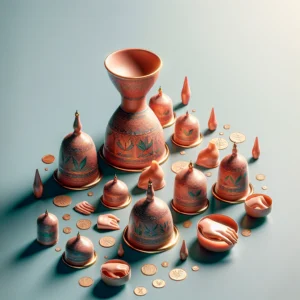Unlock Your Health Potential with Hijama Wet Cupping Therapy: A Comprehensive Guide
Hijama, often referred to as wet cupping therapy, is an ancient healing method that utilizes suction cups to extract blood from the skin’s surface. This unique procedure involves making small incisions to promote blood flow, which is thought to aid in the body’s detoxification by removing harmful toxins. The cups, crafted from materials like glass, bamboo, or silicone, are strategically positioned on specific areas of the body to create a vacuum effect. This process not only enhances blood circulation but also contributes to improved overall health and wellness, making it a valuable addition to your self-care routine.
During a Hijama therapy session, the suction generated is believed to stimulate blood flow and activate the body’s natural healing processes. Many patients experience a distinct sensation of tightness or pulling at the sites where the cups are applied, which can be both intriguing and beneficial. Despite its unconventional nature, numerous individuals find the therapy to be remarkably soothing, often leading to deep relaxation and enhanced wellness after their treatment. This combination of physical and psychological benefits makes Hijama a compelling option for those seeking holistic health improvements.
For newcomers to Hijama, the extensive range of therapeutic benefits is becoming increasingly recognized, making it a popular choice in the realm of holistic health. By delving into the nuances of this ancient practice, you can cultivate a deeper understanding and appreciation for its significant impact on personal health and wellness, transforming your approach to well-being.
Discover the Transformative Benefits of Hijama Wet Cupping Therapy
- Hijama Wet Cupping Therapy is an esteemed alternative medicine technique that employs suction to promote healing and enhance blood flow throughout the body.
- This therapy boasts a rich historical background, having been utilized across various ancient cultures, including Egyptian, Chinese, and Middle Eastern societies, serving as a natural remedy for numerous health concerns over the centuries.
- The extensive benefits of Hijama Wet Cupping Therapy encompass pain relief, improved circulation, detoxification, and an overall sensation of relaxation and well-being.
- The Hijama procedure includes making small incisions on the skin and applying cups to draw out blood and impurities, thereby revitalizing the body.
- Conditions such as migraines, chronic back pain, arthritis, and respiratory issues can be effectively managed through the therapeutic use of Hijama Wet Cupping Therapy.
 Explore the Rich Historical Legacy of Hijama Wet Cupping Therapy
Explore the Rich Historical Legacy of Hijama Wet Cupping Therapy
The origins of Hijama trace back thousands of years, with references found in ancient Egyptian, Greek, and Chinese medical texts. The renowned Hippocrates, often hailed as the father of modern medicine, advocated for its effectiveness in treating diverse health ailments. Within Islamic traditions, Hijama is highly esteemed, frequently mentioned in Hadiths, which are the documented sayings of Prophet Muhammad, showcasing its significance in these cultural practices.
This cultural endorsement has solidified Hijama’s lasting popularity, particularly within Muslim communities. As you explore the extensive historical context of Hijama, you will uncover its dual purpose: addressing physical health challenges while also fostering emotional and spiritual well-being. Ancient practitioners held the belief that by removing stagnant blood and toxins, they could rejuvenate both physical health and emotional balance, which underscores the therapy’s holistic nature.
Over the centuries, Hijama has evolved, integrating various techniques and philosophies from different cultures, culminating in the modern practice we recognize today. Today, Hijama is embraced globally, with practitioners adapting traditional methods to cater to contemporary health needs.
Investigate the Wide-Ranging Therapeutic Advantages of Hijama Therapy
The therapeutic benefits of Hijama wet cupping therapy are extensive and diverse. Many individuals report significant relief from chronic pain conditions, including migraines, persistent back pain, and arthritis following their sessions. The suction generated by the cups is said to enhance circulation, which can lead to reduced inflammation and quicker recovery from injuries, making it an appealing option for those seeking pain management.
In addition to the physical benefits, many clients find that Hijama significantly alleviates stress and anxiety, contributing to an improved overall sense of well-being. Practitioners often associate Hijama with detoxification, as the process is believed to help eliminate impurities from the bloodstream. This cleansing effect may lead to higher energy levels and a strengthened immune system, which is vital for maintaining good health.
As you consider the potential advantages of this therapy, it is important to understand that individual experiences can vary widely. While some patients may enjoy substantial relief, others might not observe immediate changes. Nevertheless, many practitioners recommend regular sessions as an essential element of a comprehensive health and wellness regimen, helping to cultivate long-lasting benefits.
 A Detailed Guide to the Hijama Process: Essential Information for Newcomers
A Detailed Guide to the Hijama Process: Essential Information for Newcomers
When you arrive for your Hijama session, your practitioner will begin with a thorough discussion about your health history and any specific concerns you wish to address. This initial consultation is vital for customizing the treatment to suit your individual needs. Once you’re comfortable, the practitioner will identify the targeted areas of your body for treatment, often concentrating on points that correlate with your symptoms or areas of tension.
The therapy typically commences with dry cupping, where cups are applied to your skin to create suction without making any incisions. After a short duration, the cups are removed, and small incisions are made on the skin using a sterile blade or lancet. The cups are then reapplied to draw out a controlled amount of blood, which is believed to facilitate detoxification and healing.
While this part of the process may seem daunting, many individuals report only minor discomfort during the incision phase. Generally, each session lasts between 30 minutes to an hour, depending on your personalized treatment plan and the extent of your health concerns.
Identifying Health Conditions and Ailments Benefited by Hijama Therapy
Hijama wet cupping therapy is utilized to address a wide range of conditions and health challenges. Many practitioners affirm its effectiveness in managing musculoskeletal issues, including back pain, neck pain, and joint discomfort. Athletes frequently seek out Hijama for muscle recovery and injury prevention, as it is known to enhance circulation and reduce inflammation, significantly contributing to overall athletic performance.
Beyond addressing physical discomfort, Hijama is also believed to provide relief for respiratory conditions such as asthma and bronchitis by supporting optimal lung function and aiding in mucus clearance. Some individuals turn to this therapy to tackle digestive issues and hormonal imbalances. As you explore the various applications of Hijama, it’s crucial to consult with a qualified practitioner who can guide your treatment in alignment with your specific health needs, ensuring a tailored approach for effective results.
 Essential Safety Precautions and Potential Risks Associated with Hijama Wet Cupping
Essential Safety Precautions and Potential Risks Associated with Hijama Wet Cupping
While Hijama wet cupping therapy is generally regarded as safe when performed by a qualified practitioner, it is important to be aware of several risks and necessary precautions. Temporary side effects, such as bruising or mild discomfort at the cupping or incision sites, may occur; however, these effects usually resolve within a few days and are typically mild.
It is crucial that your practitioner adheres to strict hygiene protocols to minimize the risk of infection during the procedure. Certain individuals should approach Hijama with caution or may need to avoid it entirely. If you have bleeding disorders, are pregnant, or suffer from specific skin conditions, it is essential to discuss these factors with your practitioner prior to treatment to ensure safety.
By being informed about potential risks and maintaining transparent communication with your healthcare provider, you can make an educated decision regarding the suitability of Hijama for your wellness journey and overall health improvement.
The Rising Popularity of Hijama: An Emerging Trend in Holistic Health Care
In recent years, there has been a significant resurgence in interest surrounding alternative therapies, particularly Hijama wet cupping therapy. As more individuals seek holistic health solutions, this ancient practice has regained its relevance in both Eastern and Western societies. Social media platforms have played a crucial role in amplifying awareness about Hijama, with many users sharing their positive experiences and outcomes online, further encouraging others to explore its benefits.
The growing popularity of Hijama can also be attributed to a broader acceptance of integrative medicine, which combines traditional treatments with alternative therapies to create a more holistic healthcare model. As you delve into this trend, you may observe that an increasing number of wellness centers and clinics are incorporating Hijama into their service offerings, making it more accessible for those interested in uncovering its potential health benefits.
 Tips for Locating a Qualified Practitioner for Effective Wet Cupping Therapy
Tips for Locating a Qualified Practitioner for Effective Wet Cupping Therapy
Finding a qualified practitioner for Hijama wet cupping therapy is essential to ensure both safety and effectiveness during your therapeutic experience. Start your search by looking for local practitioners who specialize in this therapy; many holistic health centers or acupuncture clinics often include Hijama as part of their wellness services. It’s vital to select practitioners who possess formal training in cupping techniques and a proven track record of successfully treating diverse health conditions.
Before scheduling your session, consider reaching out for an initial consultation to discuss your health concerns and inquire about their specific treatment methodologies. A reputable practitioner will take the time to understand your needs and thoroughly explain the treatment process, ensuring you are comfortable and informed. Additionally, reviewing testimonials or seeking recommendations from friends or family can assist you in finding a practitioner who aligns with your health and wellness objectives.
By following these informed steps, you can embark on your Hijama therapy journey with confidence, assured that your chosen practitioner has the necessary expertise and skills to provide a safe and effective treatment experience.
Frequently Asked Questions About Hijama Wet Cupping Therapy
What is Hijama wet cupping therapy and how does it work?
Hijama wet cupping therapy is a traditional alternative medicine technique where a therapist applies cups to the skin, creating suction believed to enhance healing by increasing blood flow and reducing inflammation through the extraction of small amounts of blood.
What are the primary benefits associated with Hijama wet cupping therapy?
Advocates of Hijama wet cupping therapy claim that it can address various conditions, including pain relief, inflammation reduction, improved blood circulation, detoxification, and enhanced relaxation. However, while many people report positive outcomes, scientific support for these claims remains limited.
Is Hijama wet cupping therapy considered safe?
When conducted by a trained and qualified therapist, Hijama wet cupping therapy is generally seen as safe. However, there exists a risk of infection if proper hygiene and sterilization practices are not adhered to, emphasizing the importance of seeking treatment from a reputable and experienced practitioner.
What side effects might occur following Hijama wet cupping therapy?
Potential side effects of Hijama wet cupping therapy may include temporary discomfort, bruising, and mild skin irritation at the cupping site. In rare instances, there may be a risk of infection or scarring, which underscores the necessity of proper care and aftercare.
Who should refrain from undergoing Hijama wet cupping therapy?
Hijama wet cupping therapy is not recommended for individuals with certain medical conditions, such as hemophilia, leukemia, or for pregnant individuals. Consulting with a healthcare professional prior to undergoing this therapy is crucial, especially for those with underlying health issues.
Presented By: Hijama Therapy
The Article: Hijama Wet Cupping Therapy Benefits You Should Know appeared first on https://mcrtherapies.co.uk
The Article Benefits of Hijama Wet Cupping Therapy You Need to Know appeared first on https://mcrtherapies.com/”>https://mcrtherapies.com
The Article Hijama Wet Cupping Therapy: Essential Benefits to Discover Was Found On https://limitsofstrategy.com
The Article Hijama Wet Cupping Therapy: Key Benefits You Should Know First Appeared ON
: https://ad4sc.com
Comments are closed